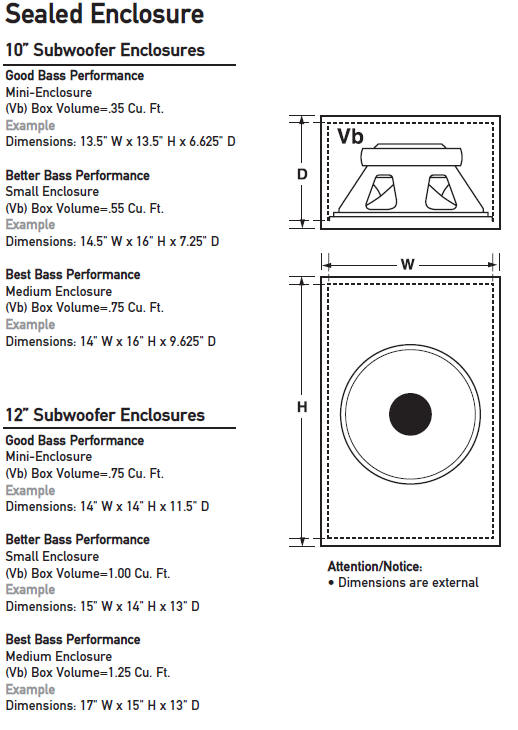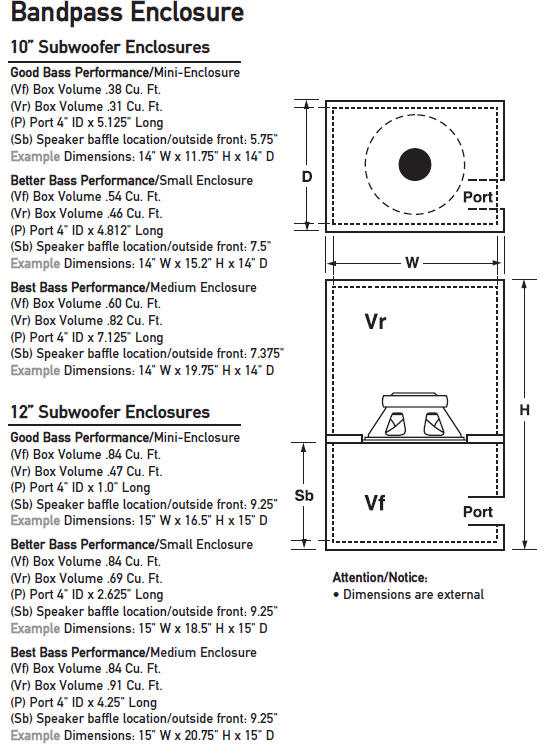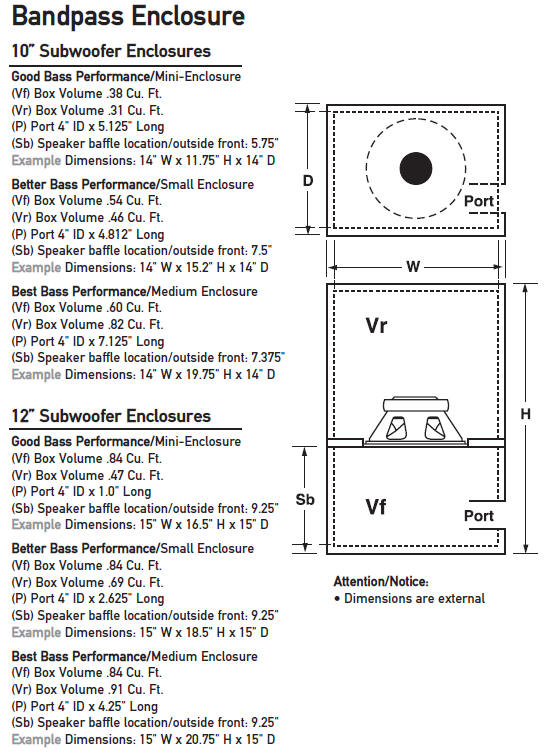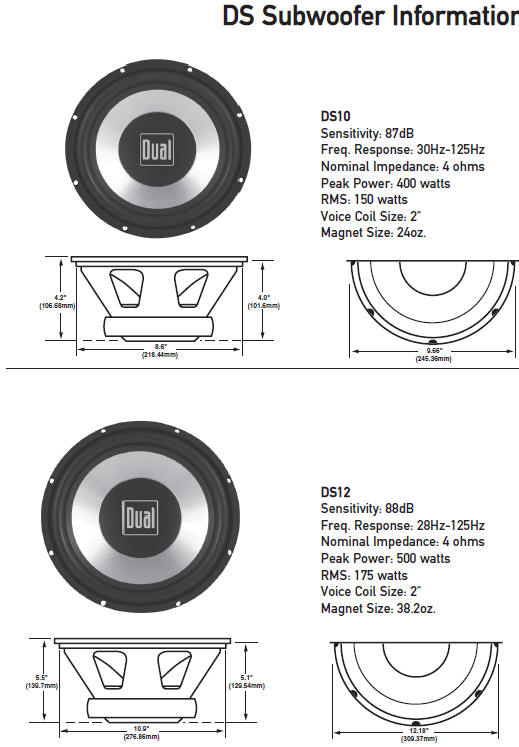Dual subwoofer Speaker Box enclosure design diy how to building
subwoofer box
projects loudspeaker plans
Sealed car audio subwoofer enclosure box Dual XS10, DS10, DS12
subwoofer driver Dual subwoofer Speaker Box enclosure design diy how to
building subwoofer box projects loudspeaker plans.

To work properly, the walls of your
enclosure must be free from flexing
during high sound pressure generated by
your subwoofer(s).
For best performance, always use MDF
(Medium Density Fiberboard) or Baltic
Birch Plywood to build your enclosure.
We highly recommend that your wood be
at least 3/4" in thickness. The enclosure
should be sealed internally with silicon or
glue and secured with screws every 4".
Assemble the box before cutting the
subwoofer hole(s). If the box will be
mounted in a vehicle, it should be
fastened securely
• Make sure all moving parts and factory electrical wires are out of
the way and will not
interfere after installation.
• Ensure the wire is of sufficient length to avoid pulling or stretching.
This is even more
important if the wires will be run under or through the factory interior.
• Use electrical tape and wire ties to ensure all wires are properly
secured.
• Avoid installing speakers or electronics where they can be subject to
moisture.
• Ensure the speaker wires are connected using correct polarity. The
positive polarity is
marked by a (+) sign. Incorrectly connected subwoofers will result in
limited bass
output.
• Speaker wire should be isolated from the vehicle’s electrical system
to avoid noise
being picked up by the amplifiers.
• We recommend using 14 gauge or larger sized speaker wire to ensure
your subwoofer
receives the full power output of your amplifier.
• Remember to listen responsibly and respect your ears. Being exposed to
sounds
Bandpass enclosure Dual

Bandpass subwofer enclosure
design 
 |